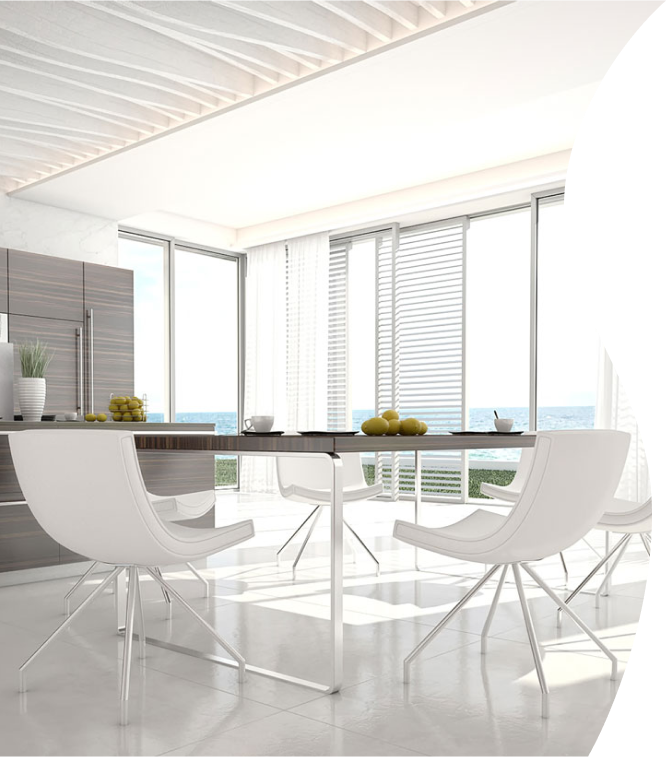Drying Of Cemfloor
Without a doubt, the most common question that we receive relates to the way in which Cemfloor dries. This is no surprise, since this is one of the main concerns with all types of screed; Indeed, liquid screed drying times can be a major factor in the choice of screed type for a project.
The question asked is normally one of the following-
- When will my screed be dry?
- How do I know if my screed is dry?
- How can I make my screed dry faster?
- How does Cemfloor dry?
How Long Does Screed Take To Dry?
This is perhaps the single most misunderstood aspect of the entire subject of floor Screeding. All screeds, when they are laid, contain water. Almost all screeds (except very expensive and specialized materials) use only some of this water in the process of “setting” and therefore must lose the remainder by evaporation from the screed surface. The rate at which this will happen will always depend on the conditions on the site while this drying is going on.
Screed Drying Times Explained
The most important factor affecting the curing time for screed is that the air immediately in contact with the screed should itself be as dry as possible (i.e. it must have a low relative humidity). If this air is not moving much, then the air close to the screed surface will quickly gain a high relative humidity (become wet) and so the drying of the screed will be severely slowed. If this air is cold it will be able to “hold” less water and so the screed floor drying time will be slowed. To ensure that these conditions don’t happen, and the screed is allowed to dry, it is therefore important for the air to be as warm as possible and “moving”. The secret then, is for the area to be well ventilated with moving air and for this air to be warm. In fact, though both aspects have an effect, the movement of air is actually more important than the temperature.
Look at the section relating to drying on the literature for any manufacturers screed or screed admixture. Many will quote a drying time which might be stated, for example, as “ready to receive floor coverings in X days” or similar wording. Look further and you will almost always find that this is qualified by also stating the conditions that must be adhered to. This will often be 21dec C and 65%RH or similar. Even this doesn’t give a full picture though; In an unventilated room it is possible for the general conditions to meet these criteria but for the air low down and in contact with the screed to be at a much higher moisture content. This emphasises even more that it is air movement that is the most important factor.
A word of caution, the very conditions that facilitate rapid drying are the same ones that can cause problems, particularly cracking, in the early life of the screed. Many screeds need to be “cured”, often under polythene during their early life. Curing is, effectively, creating the worst drying conditions possible so that the screed doesn’t dry before it has gained enough strength to resist the shrinkage that can result through drying. Even when a specific curing method is not essential for a particular screed, early drying must be done with caution and in accordance with the manufacturers recommendations.
How Do I Know If My Screed Is Dry?
Most floor finishes require that the screed onto which they are installed should be dry or that it should contain a level of moisture below a certain level. Manufacturers of floor finishes will usually define the maximum level of water that can be tolerated but often this will be expressed as a level of relative humidity that will result in air that is “trapped” in contact with the screed.
If a volume of air is in contact with a screed (or in fact any material) such that there is no air being gained or lost from the volume then it will, in time reach a constant moisture content (relative humidity). The moisture content that it will achieve will be related to the amount of moisture present in the screed. A wetter screed will produce a higher stable moisture content in the air. This then becomes a way to measure the moisture in the screed, by measuring it in the trapped air and knowing the correlation between moisture content in the screed and in the air.
The slight difficulty of measuring moisture in a screed in this way is that the correlation is not the same for all materials. Nonetheless this is the basis on which BS8203 prescribes measurement of moisture in screeds to ascertain suitability for floor finishes.
As a point of note, it makes good sense to be more interested in the stable relative humidity of air above a screed rather than in the moisture content of the screed itself. It actually matters little, for the purpose of overlaying a screed with a floor finish, what the absolute moisture level in a screed is. Some screeds require for the absolute level to be very low before they will produce a measured relative humidity in the air that is suitable for a floor finish, but other screeds can have moisture contents as much as ten times as high, whilst still being suitable for overlayment.
Another way of imagining this is that water in a screed actually does no harm to a floor finish if it stays there. It is its propensity to try to leave the screed that gives the potential to damage a floor finish.
There are various types of electronic meter available for measuring moisture in screed. The accuracy of these will depend on the screed type but usually they are useful only as a guide prior to measuring the relative humidity.
How Can I Make My Screed Dry Faster?
This will depend on the exact type of screed but usually the only option is to provide the best possible drying conditions. If there is underfloor heating in the screed this can, with care, be used to assist the drying.
So How Does Cemfloor Dry?
In fact, the question that is really of concern is “How quickly can I install floor finished on Cemfloor?” In this respect, Cemfloor is very reliable and predictable.
Cemfloor only needs to lose about half of its “free” water before it will produce a relative humidity of 75% or less and so be ready to receive floor finishes. Although it is still affected by the ambient drying conditions it is less sensitive to these than most other screeds. This means that we can with confidence (gained over many years “in the field” and by extensive lab testing) say that for a 50mm screed the following will be the case.
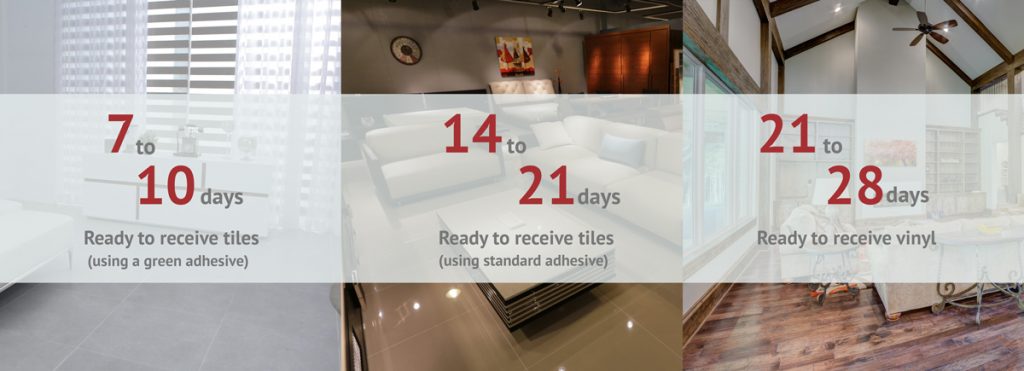
28 Days would normally be the maximum period required for any floor finish but, of course, the manufacturers must be consulted to ensure that lower moisture level (relative humidity) is not required.
All in all, Cemfloor is already becoming known in UK as it is in Ireland and France, as the quick drying screed that enables floor finishes to be applied early.
If you wish to learn more about Cemfloor, talk to us today on +353 94 9553900 if calling from Ireland or 01415 307 587 if calling from the UK

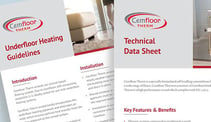
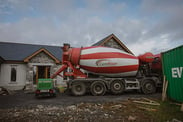
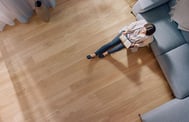
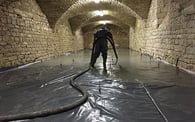

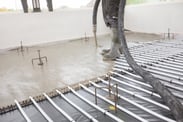
.png?width=300&height=122&name=Untitled%20design%20(34).png)
